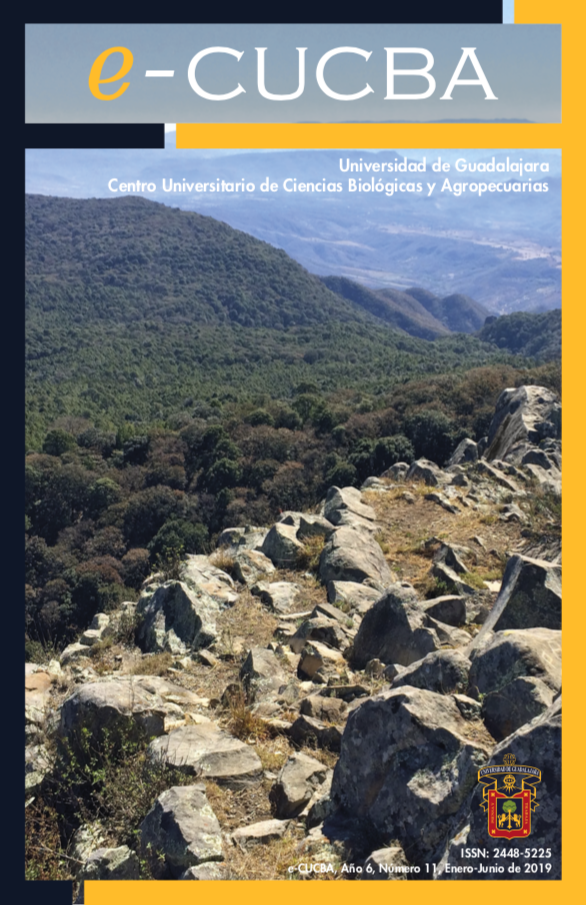Effect of treatment of apitoxin (Apis mellifera venom) in the survival of BALB/c mice with murine lymphoma L-5178-Y
DOI:
https://doi.org/10.32870/e-cucba.v0i11.125Keywords:
Apitoxin, lymphoma, venomAbstract
Apitoxin, or bee venom, is a bitter and colorless liquid. It has a specific and strong aroma, has a specific weight of 1.1313 and an acidic pH of 5.5. The active portion of this poison is a complex mixture of proteins. The main component is melittin, comprising 52% of the peptides of the poison. Melitin is a powerful anti-inflammatory agent, as well as induces the production of cortisol in the body. Phospholipase A2 adds 10 to 12% of the peptides and is the most destructive component of apitoxin. It is an enzyme that degrades the phospholipids of which the cell membranes are made. It also lowers blood pressure and inhibits coagulation. Phospholipase A2 activates arachidonic acid, which is metabolized in the cyclooxygenase pathway for the synthesis of prostaglandins. Apitoxin has been used in traditional medicine to treat various diseases such as inflammation of traumatic origin, rheumatism, osteoarthritis, rheumatoid arthritis, lumbar neuralgia, multiple sclerosis, radiculitis, arteriosclerosis of the extremities, lupus and peripheral nervous system disorders, treatment of blood pressure, trophic ulcers, immunological deficiencies, edema, asthma, migrainous syndrome, cardiovascular disorders characterized by low myocardial efficiency, as well as cerebral vascular disorders and viral diseases such as herpes Zoster and genital herpes, this due to its properties anticoagulants, anti-inflammatory and antiviral. It has also been shown to possess anti-carcinogenic properties, various types of cancer cells, including kidney, lung, liver, pros- tate, bladder, and breast cancer cells as well as leukemia cells, can be targeted by poison peptides of bee, like the aforementioned melitina and phospholipase A2. It has been suggested that the cellular cytotoxic effects through the activation of phospholipase A2 by melittin is a critical mechanism for the anti-carcinogenic activity of bee venom. The induction of programmed cell death through several mechanisms of cancer cell death, including the activation of caspase and matrix metalloproteinases, is important for the anti-carcinogenic effects induced by melittin. The conjugation of lytic cell peptide (melittin) with hormone receptors and gene therapy loading melitin may be useful as a novel targeted therapy for the treatment of some types of cancer, such as breast and prostate cancer. Objective: The objective of this work was to evaluate the anti-carcinogenic capacity of apitoxin, through a tumor model in vivo. Method: We used mice of the BALB / c strain with the murine lymphoma L-5178-Y, evaluated different routes and times of administration, intraperitoneal, intramuscular and oral, administering 200μg. of apitoxin per daily dose to each mouse until the day of death, the groups were in duplicate for each of the administration routes, in order to have groups where the apitoxin was administered 15 days before inoculating the tumor, and other groups that They started their treatment the next day after the tumor was inoculated. Results: Of the different groups studied, we found that the groups where the apitoxin was administered prior to the tumor inoculation, specifically in the groups with oral and intramuscular route of administration, showed significant difference with respect to the control group, that is, life of mice treated for 15 days with apitoxin before inoculating the tumor, prolonged life longer than in mice that only had tumors and were not administered apitoxin at any time. Conclusions: Apitoxin prolongs the life of mice with tumors when administered orally and intramuscularly and prior to inoculation of the tumor.






